Week 2: Late Medieval Italy
1/15
Earn XP
Description and Tags
MIDTERM 1 is based on Week 1 - Week 8
Name | Mastery | Learn | Test | Matching | Spaced |
|---|
No study sessions yet.
16 Terms
Facts to know before hand:
Christian art, which was initially influenced
by the illusionary quality of classical art,
started to move away from naturalistic
representation and instead pushed toward
abstraction.
• Artists began to abandon classical artistic
conventions like shading, modeling and
perspective conventions that make the
image appear more real. They no longer
observed details in nature to record them in
paint, bronze, marble, or mosaic.
• Instead, artists favored flat representations
of people, animals and objects that only
looked nominally like their subjects in real
life.
• These abstracted images removed at least
some of the temptations for idolatry.
Renaissance Period c. 1400 - 1600
Renaissance in the Birth of Venus (1485 - 86)
Sandro Botticelli is looking back to classical (Greco-Roman) culture
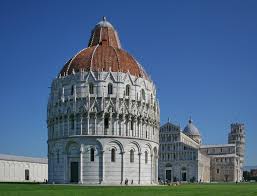
Pisa Baptistery, Pisa (Italy)
Garden
Tower
People would be baptized here
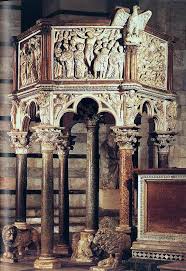
Baptistery Pulpit:
Artist: Nicola Pisano
Inside the Pisa Baptistery Pulpit
c. 1259 - 1260
Continuation of medieval artistic traditions
Continuation of classical artistic traditions as well
Mid 13th century: Pisa as popular city for artist seeking lucrative commissions
Has references to classical and gospel art, resembles a Roman Coffin
man resembles Hercules, which is a symbol of fortitude ( a Christian value)
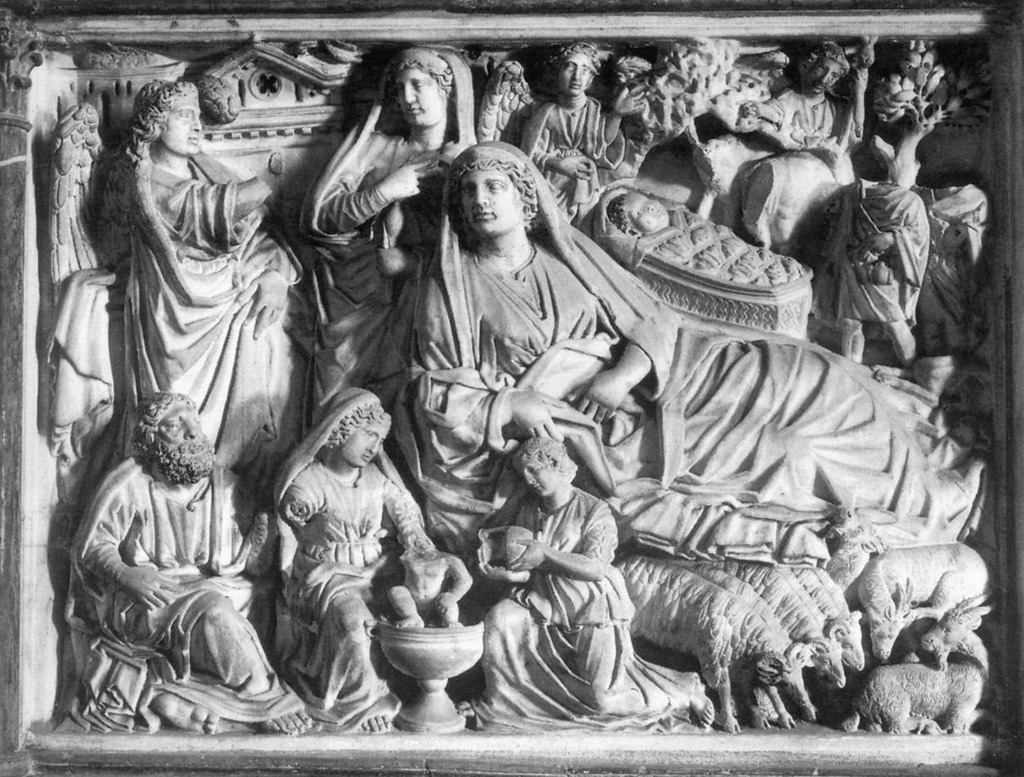
Annunciation, Nativity, Adoration of the Shepherds:
Nicola Pisano
Pisa, Italy
c. 1259 - 1260
Three scenes:
the Annunciation, Nativity, and Annunciation to the Shepherds
the Adoration of the Magi
the Crucifixion and the Last Judgement
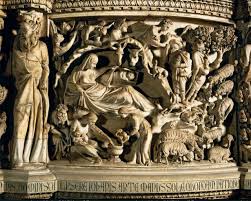
Nativity and Annunciation to the Shepherds:
Giovanni Pisano: the son of Nicola Pisano
Pisa, Italy
c. 1302-1310
Giovanni was originally hated for this piece, they deemed his art as too clustered
His piece is more expressive
This work was meant to be seen from the ground on up and not face front
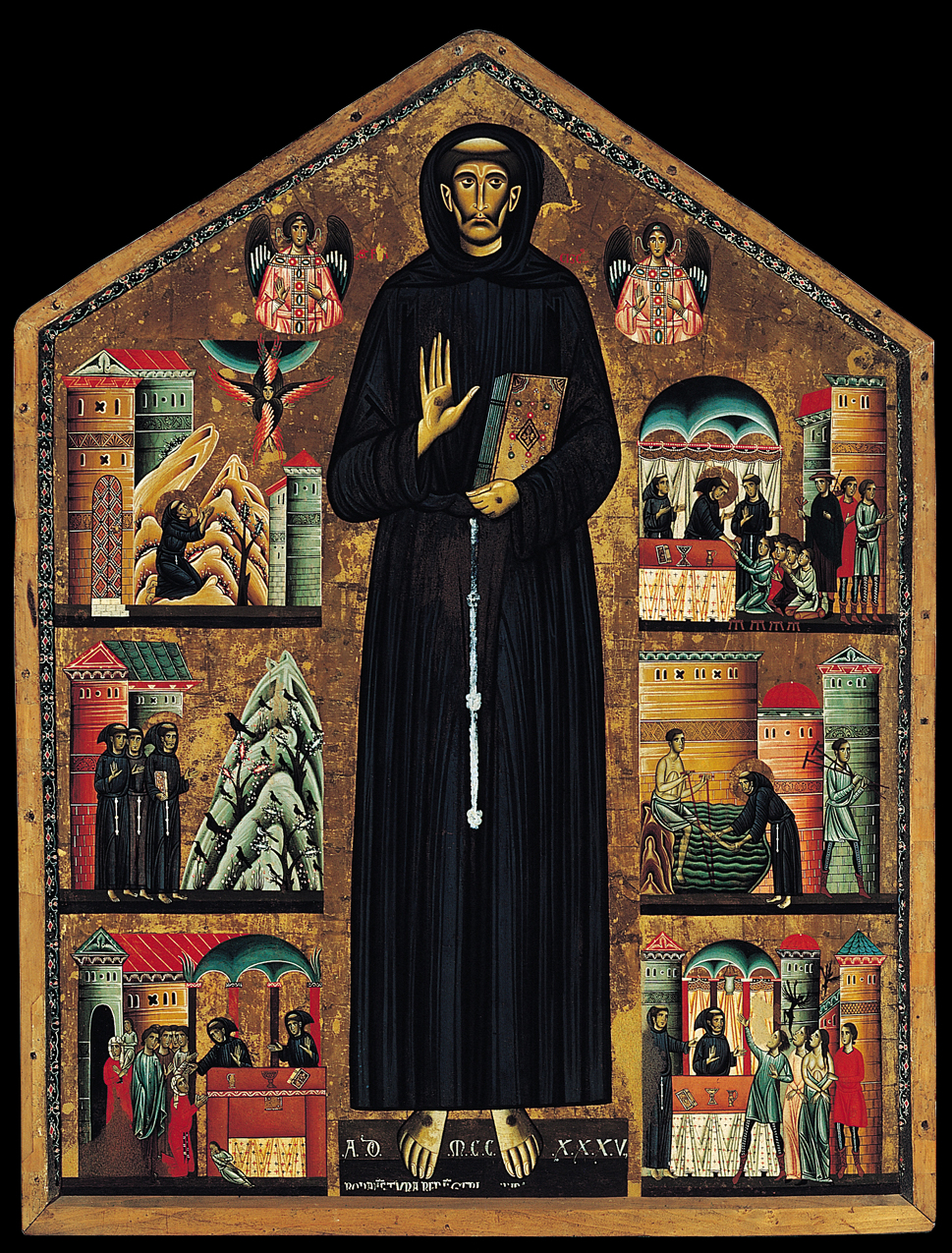
Saint Francis Altarpiece
Bonaventura Berlinghieri
c. 1235
Tempera on wood
Byzantine Influence:
fully frontal figures
gold background
flattened, 2D feel
Maniera Greca style
St Francis:
1226: died
1228: canonized
1235: died
Altarpieces:
pinnacles: near the top with a painting inside, kind of round
Side panels: typically 2 paintings on the left and right
Roundels: small under the pinnacles, small circle painting on the inside
pilasters: on the side, thin
Pilaster bases: at the bottom
Predella: above the predella
City State:
Political entities
the city is the center of the government
revolved around the city
Florence vs. Siena Skinny Tower
bell tower
gov officials work there
the two are rivals city states
Duccio vs. Giotto vs. Cimabue
Duccio: c. 1285 - 86
Giotto: c. 1300 - 05
Cimabie: c. 1290 - 1300
not everyone could get close to the altars
all paintings look quite similar
angels on the side
Mary holding baby Jesus
the prophets who predicted Jesus’s birth below
Mary wearing royal blue with a halo around her
Blue paint was expensive, it came from Afghanistan, showing how diverse the trade is
Inspired by Byzantine Art
Mary is not fully facing the front
more shading and details occurs as the years go on
all have the same frame shape which is inspired by Greek & Roman Churches
These types of paintings are called “The Enthroned Madonna”
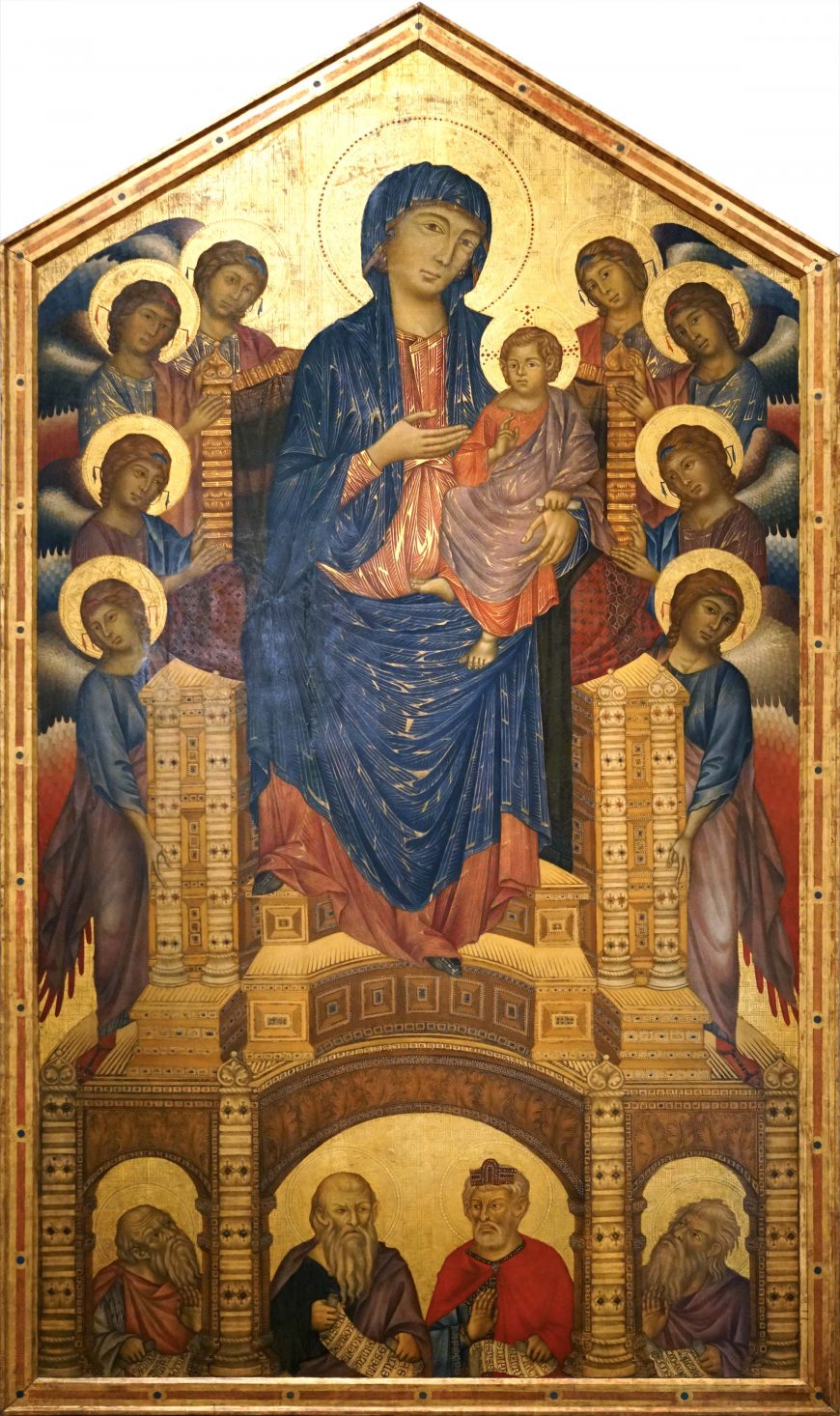
Cimabue: Madonna Enthroned with Angels and Prophets
c. 1280 - 1290
Santa Trinta, Florence, Italy
Cimabue was the teacher of Giotto
He was one of the first artists to depart from maniera greca style
Byzantine influence, but experimentation with deoth too
striving for a closer approximation of the natural world
Used gold striations to show lines
commissioned by a confraternity: a religious brotherhood of lay ppl
Jesus holding a scroll to show prophets were right about Jesus’ birth
Tooled Gold: pretty patterns in the background
Ducio uses light and shadow for folds
He uses gold striations for folds
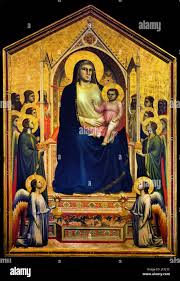
Giotto: The Ognissanti Madonna and Child Enthroned
c. 1306 - 1310
tempera on panel
uses modeling of color for folds, also known as chiaroscuro
it was commissioned by the Humiliati, a religious order, and wool merchants in Florence
this piece was so popular that it got copied
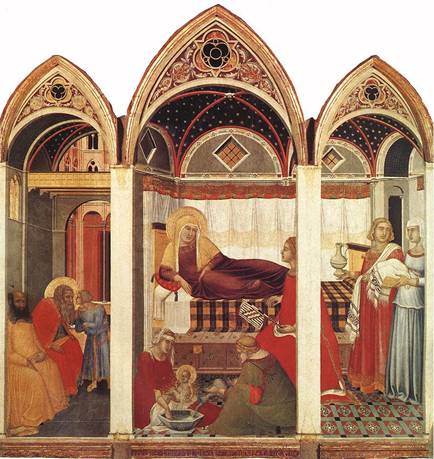
Piertto Lorenzetti: Birth of the Virgin
c. 1335 - 1342
Altar of St. Savinus, Siena Cathedral
Tempera on panel
He was a student of Giotto
this story is not found in the Bible
tritepct (three pieces)
takes place in a room/ a wealthy house
based on Italian house
references to Gothic architecture windows and frames
feels more 3D or realistic
two women helped Anne (the mom)
woman holding Sienna Italy Flag
dad surprised after being told his wife had a baby
International Gothic
style of European courts changed
Really elegant era
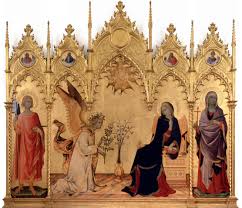
Annunciation with St. Margaret and St. Ansanus:
Artists: Simone Martini and Lippo Memmi
c. 1333
Tempera on panel, gold background
SM made the center, LM made the two sides
shows the wealth
Angel speaking to Mary saying she’s gonna have Jesus
You can see the words
Halo has texture
Dove symbolizes the Holy Spirit
Seraphim: highest ranking angels
Angel offering flowers to show peace
Lily’s show Mary’s purity
Details of Gabriel (angel) imitates silk
4 prophets holding scrolls
silk fragment: influenced by silks from China, Byzantium, and Islamic countries of the Middle East